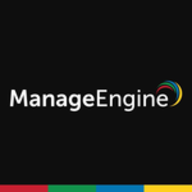

Splunk Enterprise Security and ManageEngine Log360 compete in the log management and security information event management (SIEM) domain. Splunk seems to have the upper hand due to its advanced capabilities, including machine learning and versatile real-time data insights.
Features: Splunk Enterprise Security is recognized for its real-time alerts, scalability, and machine learning capabilities, enhancing operational intelligence with versatile dashboards for centralized management. ManageEngine Log360 excels in monitoring application logs and efficient dashboard capabilities, streamlining administrative tasks with user-friendly operations.
Room for Improvement: Splunk requires improvements in operational workflow, use case frameworks, and visualization layer stability. Users note its GUI lacks intuitiveness, and permissions configuration is inflexible. Cluster management via command line and security administration enhancements are recommended. ManageEngine Log360 needs enhancements in data integration, stability, and incident management, with improved documentation and deployment automation.
Ease of Deployment and Customer Service: Splunk offers versatile deployment options, including on-premises, public, and hybrid cloud solutions, and benefits from knowledgeable support staff and active community resources. Users note variability in support quality for complex issues. ManageEngine Log360 provides straightforward deployment in on-premises and hybrid cloud models, emphasizing easy use and cost-effectiveness. Users cite the need for improvement in technical support response times and expertise.
Pricing and ROI: Splunk Enterprise Security, while high-cost, delivers significant ROI with extensive features, though the volume-based pricing model can be expensive. ManageEngine Log360 offers a more affordable solution with reasonable licensing and subscription models, though it's less comprehensive than Splunk.
I have noticed a return on investment with Splunk Enterprise Security, as it delivers substantial value for money.
For smaller organizations, other products may provide better value for money.
If you want to write your own correlation rules, it is very difficult to do, and you need Splunk's support to write new correlation rules for the SIEM tool.
I have sought assistance from Splunk Enterprise Security support in the past, particularly during deployment, and they provide friendly and effective help.
The technical support for Splunk met my expectations.
They struggle a bit with pure virtual environments, but in terms of how much they can handle, it is pretty good.
It is easy to scale.
I find it easy to scale Splunk Enterprise Security for our environment.
It provides a stable environment but needs to integrate with ITSM platforms to achieve better visibility.
It is very stable.
Improving the infrastructure behind Splunk Enterprise Security is vital—enhanced cores, CPUs, and memory should be prioritized to support better processing power.
Data retention can be better. If we want to look at the data for five months or six months, that is not available to us. We only have a history of 20 or 30 days.
Splunk could enhance its offerings by incorporating modules for network detection and response and fraud management.
I saw clients spend two million dollars a year just feeding data into the Splunk solution.
The platform requires significant financial investment and resources, making it expensive despite its comprehensive features.
Splunk is priced higher than other solutions.
This capability is useful for performance monitoring and issue identification.
Splunk Enterprise Security's most valuable features are its stability and the robust Splunk Search Processing Language.
They have approximately 50,000 predefined correlation rules.


Log360 is your one-stop solution for all log management and network security challenges. It is an integrated solution that combines EventLog Analyzer and ADAudit Plus into a single console to help you manage your Active Directory auditing and network security easily.
Splunk Enterprise Security is widely used for security operations, including threat detection, incident response, and log monitoring. It centralizes log management, offers security analytics, and ensures compliance, enhancing the overall security posture of organizations.
Companies leverage Splunk Enterprise Security to monitor endpoints, networks, and users, detecting anomalies, brute force attacks, and unauthorized access. They use it for fraud detection, machine learning, and real-time alerts within their SOCs. The platform enhances visibility and correlates data from multiple sources to identify security threats efficiently. Key features include comprehensive dashboards, excellent reporting capabilities, robust log aggregation, and flexible data ingestion. Users appreciate its SIEM capabilities, threat intelligence, risk-based alerting, and correlation searches. Highly scalable and stable, it suits multi-cloud environments, reducing alert volumes and speeding up investigations.
What are the key features?Splunk Enterprise Security is implemented across industries like finance, healthcare, and retail. Financial institutions use it for fraud detection and compliance, while healthcare organizations leverage its capabilities to safeguard patient data. Retailers deploy it to protect customer information and ensure secure transactions.
We monitor all Security Information and Event Management (SIEM) reviews to prevent fraudulent reviews and keep review quality high. We do not post reviews by company employees or direct competitors. We validate each review for authenticity via cross-reference with LinkedIn, and personal follow-up with the reviewer when necessary.